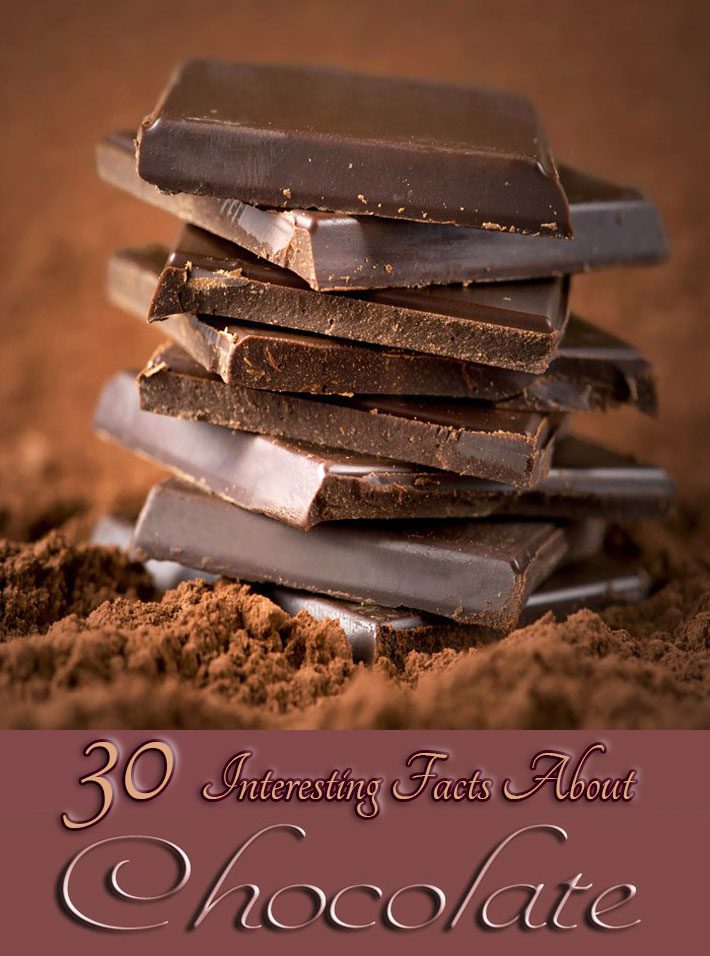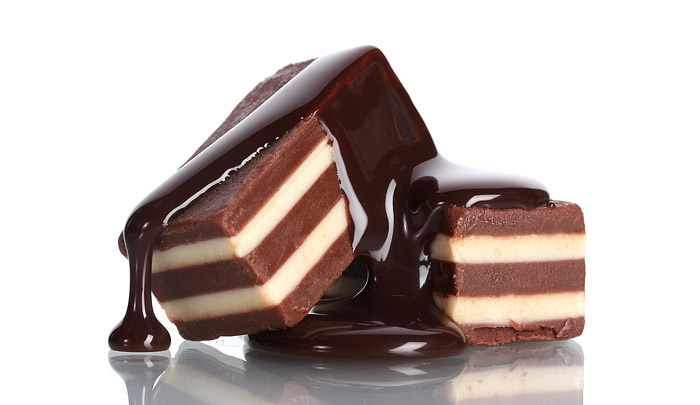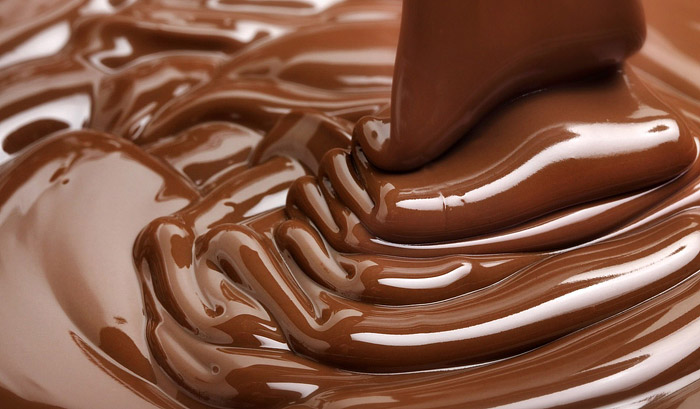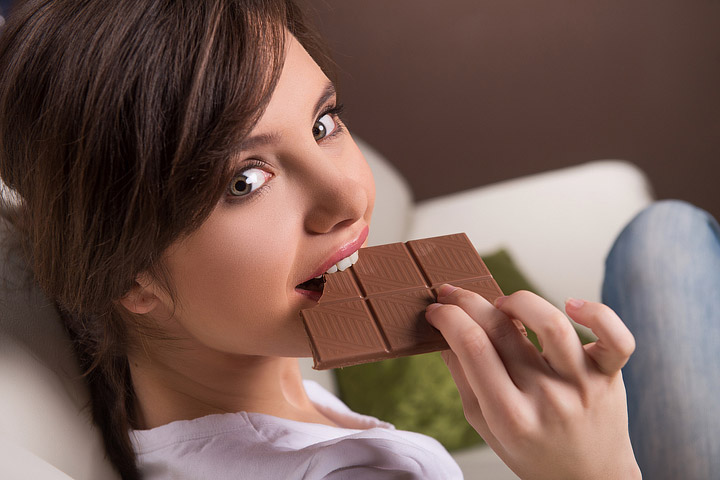
The origin of the cacao (pron. Ca-cow) tree is in dispute. Some say it originated in the Amazon basin of Brazil; others place say it is native to Central America. We do know that during his conquest of Mexico, Hernando Cortez, the great Spanish explorer, came upon the Aztec Indians using cocoa beans to prepare their royal drink which they called “chocolatl” (meaning warm liquid).
Excited about this new product, Cortez took some beans back with him to Spain. With some added cane sugar, the chocolate drink became very popular, especially among the Spanish aristocracy. Spain wisely started to plant cacao trees themselves which developed into a very profitable business. Remarkably, the Spaniards succeeded in keeping the art of the cocoa industry a secret from the rest of Europe for nearly a hundred years.

30 Interesting Facts About Chocolate
Beside this little chocolate history lesson, we gathered 30 more interesting facts about chocolate you probably didn’t know:
- The English chocolate company Cadbury made the first chocolate bar in the world in 1842.
- In the film Psycho, Alfred Hitchcock used Bosco chocolate syrup for blood in the famous shower scene.
- Although cacao originated in Central and South America more than 4,000 years ago, now approximately 70% of the world’s cacao is grown in Africa. Cote d’lvoire is the single largest producer of cocoa, providing roughly 40% of the world’s supply.
- Chocolate has traditionally been associated with magical, medicinal, and mythical properties. In fact, in Latin, cacao trees are called Theobroma Cacao, or “food of the gods.”
- Reports predict that the global chocolate market will grow to $98.3 billion in 2016 from $83.2 billion in 2010.
- Cacao trees can live to be 200 years old, but they produce marketable cocoa beans for only 25 years.
- Nearly all cacao trees grow within 20 degrees of the equator, and 75% grow within 8 degrees of either side of it. Cacao trees grow in three main regions: West Africa, South and Central America, and Southeast Asia/Oceania.
- Each cacao tree can produce approximately 2,500 beans. It takes a cacao tree four to five years to produce its first beans.
- People who feel depressed eat about 55% more chocolate than their non-depressed peers.
- Chocolate became one of the earliest American exports when, in the early sixteenth century, both Columbus and Cortez brought cacao beans back to Spain.

- The FDA is debating a proposal to allow candy makers to substitute vegetable oil for the traditional cacao butter.
- Dark chocolate has been shown to be beneficial to human health, but milk chocolate, white chocolate, and other varieties are not. For dark chocolate to be beneficial, cacao or chocolate liquor should be the first ingredient listed, not sugar.
- Once reserved for the elite, chocolate became available to everyone due to the technological advances of the Industrial Revolution. However, as chocolate became increasingly popular in Europe and America, thousands of people were used as slaves to produce cacao.
- Quakers, such as George Cadbury, amassed a great fortune producing drinking chocolate as an alternative to alcohol.
- In 1875, Swiss Daniel Peter discovered a way of mixing condensed milk, manufactured by his friend Henri Nestlé, with chocolate to create the first milk chocolate.
- Researchers have found no link between acne and chocolate. In fact, German researchers suggest that flavonoids in chocolate absorb UV light, which help protect and increase blood flow to the skin, ultimately improving its appearance.
- The largest cuckoo clock made of chocolate can be found in Germany.
- Research suggests that dark chocolate boosts memory, attention span, reaction time, and problem-solving skills by increasing blood flow to the brain. Studies have also found that dark chocolate can improve the ability to see in low-contrast situations (such as poor weather) and promote lower blood pressure, which has positive effects on cholesterol levels, platelet function, and insulin sensitivity.
- Mayans used chocolate in baptisms and in marriage ceremonies. It was also sometimes used in the place of blood during ceremonies. Mayan emperors were often buried with jars of chocolate by their side.
- According to Aztec legend, the god Quetzalcoatl brought cacao to earth but was cast out of heaven for giving it to humans. As he fled, he vowed to return one day as a “fair-skinned bearded man to save the earth.”

- Ninety percent of modern cacao is made from a type of cacao called forastero(foreigner). However, before the 1800s, cacao was made from a type of bean calledcriollo. Even though forastero does not taste as good as criollo, it is easier to grow.
- The Catholic Church once associated chocolate with heretical behavior, including blasphemy, extortion, witchcraft, seduction, as well as being an observant Jew.
- During WWII, the Germans designed an exploding, chocolate-covered, thin steel bomb designed to blow up seven seconds after a piece was broken off.
- Nazis would use chocolate to lure Jews onto cattle cars destined for concentration camps.
- The first chocolate chip cookie was invented in 1937 by Ruth Wakefield who ran the “Toll House Inn.” The term “Toll House” is now legally a generic word for chocolate chip cookie. It is the most popular cookie worldwide and is the official cookie of Massachusetts.
- The country whose people eat the most chocolate is Switzerland, with 22 pounds eaten per person each year. Australia and Ireland follow with 20 pounds and 19 pounds per person, respectively. The United States comes in at 11th place, with approximately 12 pounds of chocolate eaten by each person every year.
- Chocolate is so important to cacao farmers in Indonesia that they built a 20-foot statue of a pair of hands simply holding a cacao pod.
- In Oaxaca, Mexico, healers called curanderos use chocolate to treat several illnesses such as bronchitis. In some regions, children drink chocolate in the morning to ward off scorpion and bee stings.
- In 2002, Marshall Field’s in Chicago made the largest box of chocolate. It had 90,090 Frango mint chocolates and weighed a whopping 3,326 pounds.
- Madame du Barry, reputed to be a nymphomaniac, encouraged her lovers to drink chocolate in order to keep up with her.
Please follow us on Pinterest and enjoy our collection of recipes, crafts, fitness, health tips, gardening, DIY and more…





Leave a Reply